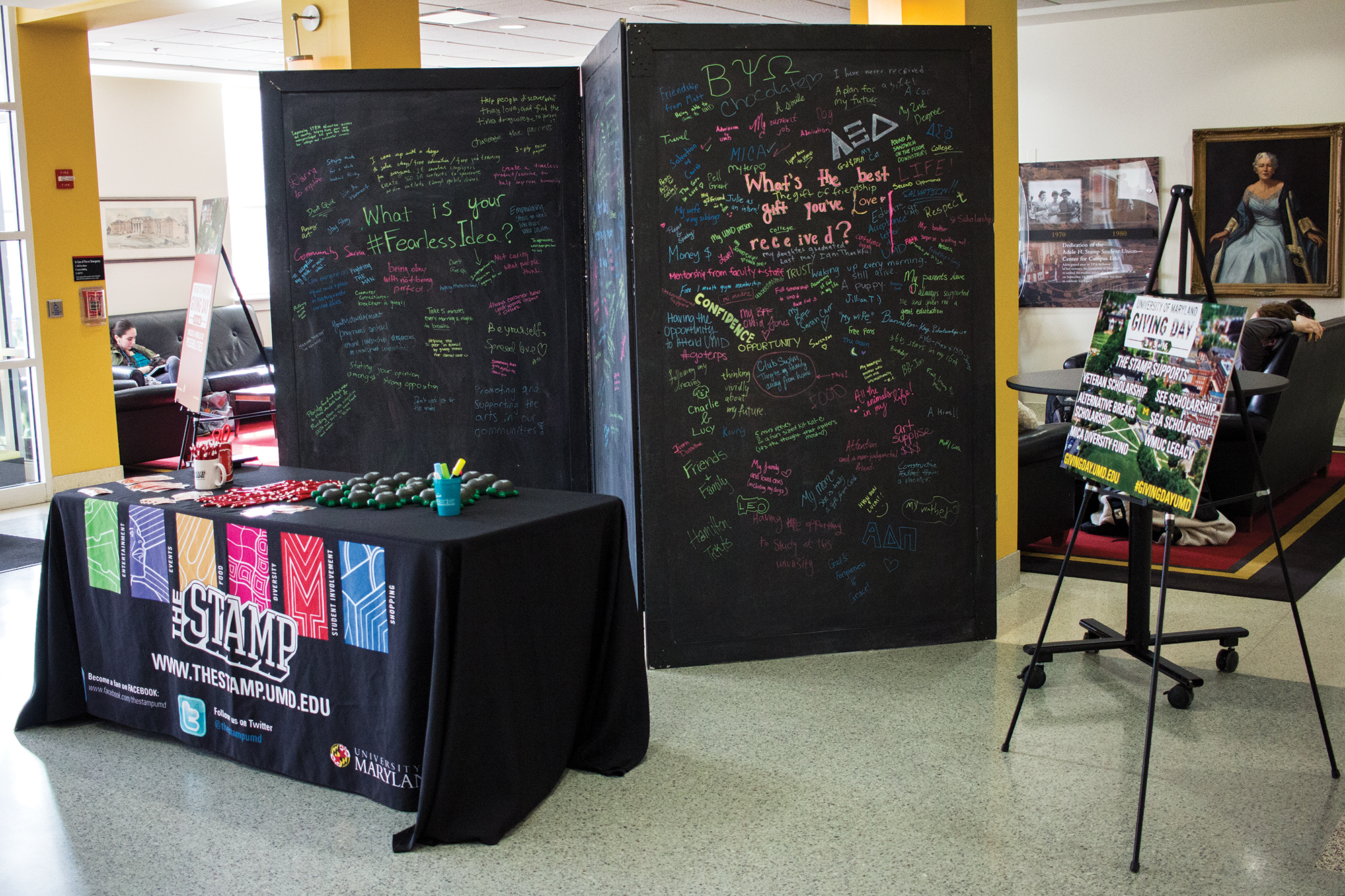The University of Maryland’s annual Giving Day raised more than $1.2 million this year for several academic colleges, departments, and student organizations.
Giving Day is when the university reaches out to faculty, staff, students and alumni, encouraging them to donate funds for specific programs. Last year, this university raised $2.2 million.
There was a sizable donation last year that did not occur again this year, said Brian Logue, the senior director of annual giving.
Donors raised a total of $1,254,906 this year for programs such as various academic colleges, Hillel Center, the athletic department, the Alumni Association, as well as student organizations such as the equestrian team, the WMUC Legacy Fund, and Greek organizations.
[Read more: UMD nets almost $400,000 in first Giving Day fundraiser]
“We create this huge day and [groups on campus] leverage some of the promotion and everyone does their best to make sure their communities are aware of this. Then, they will get that money they need to help their programs,” Logue said.
Logue added that the programs Giving Day focuses on are important priorities of this university: research, arts, athletics, student life and scholarship.
The behavioral and social sciences college received the greatest amount of money and the second highest number of gifts with a total of $299,433 raised, which will go toward funding scholarships for students within the department as well as other needs, such as funding additional programs of the college, Logue said.
The Clarice Smith Performing Arts Center raised $6,180, which is about 60 percent more than what was raised in 2017, said Cecily Habimana, the assistant director of institutional giving for The Clarice. It will go toward The Clarice Fund, which supports performances and arts in the community. These performances include funding for student dance and orchestral performances, as well as funding performances for students to enjoy.
“Our budget is close to $7 million, so it’s not a large dent, but it’s good to be able to talk to our patrons and students about the arts,” Habimana said.
The athletic department received $62,855, which will primarily go toward funding scholarships for student athletes, said Zack Bolno, the senior associate athletics department spokesman.
Student organizations were also able to take advantage of Giving Day. The equestrian team received 195 gifts for a total donation of $3,050, said Chloe Bates, the team’s public relations chair. It also received $1,250 from this university for getting the highest number of gifts of any student organization.
Bates, a sophomore communication and Spanish major, believes the team was able to raise the amount of money it did because of the additional publicity from Giving Day. The team will put the money towards subsidizing and funding skills workshops for team members as well as replacing their old and outdated equipment, she said.
“It’s a really great opportunity for us. It’s really hard to seek out donations, and this just makes it so much easier to get support,” she said, noting they were able to subsidize the price of a riding clinic last year from several hundred dollars to $25 for team members.
[Read more: University of Maryland to receive $219.5 million donation — the largest in its history]
The Clarvit family, a family of alumni from the university, amongst other donors, helped match certain funds given to organizations. They matched gifts donated to various funds by students, giving over $25,000 to funds including other student organizations and academic programs.
Beta Theta Pi received the most gifts of any Greek organization, which will go to student scholarships, Logue said, adding Giving Day donations funded 17 scholarships for Greek life students last year.
The fraternity received 167 gifts, and will use the money to fund a scholarship for “someone who has dedicated a lot of time and effort to Beta,” said Brad Weissel, the fraternity’s philanthropy chair. Beta Theta Pi was able to raise so much money by turning the day into a competition with other Greek organizations and sending leaderboard updates to alumni throughout the day, Weissel added.
“By making it a competition we were able to get a lot more support. Many of our alumni are very competitive and they did not want to lose,” Weissel said.



